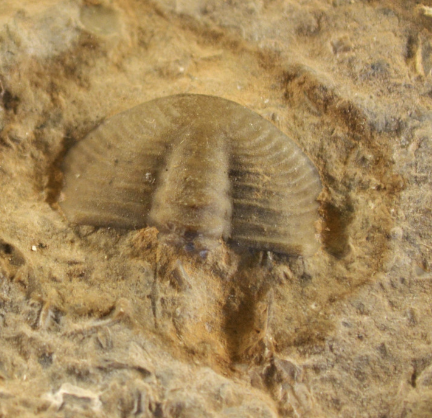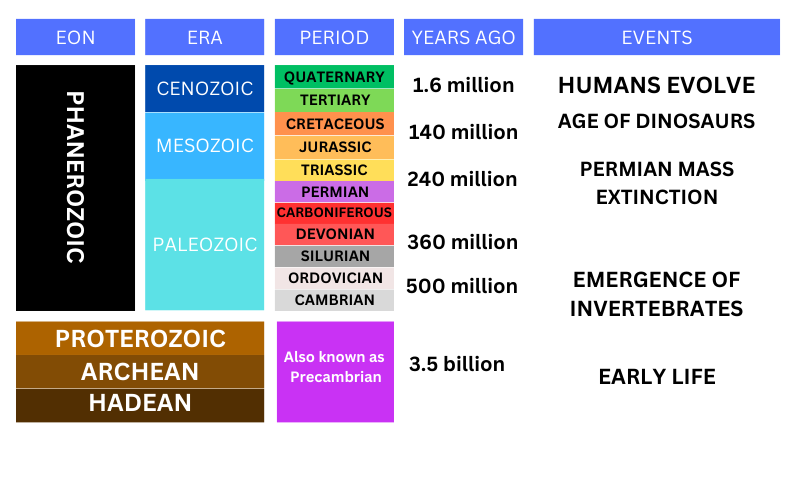Cambrian Period
 |
| Cambrian Period Trilobite Fossil |
Image Credit: National Park Service - Public Domain |
The Cambrian Period, which occurred approximately 541 to 485 million years ago, is renowned for a spectacular event in the history of life on Earth – the Cambrian Explosion. This evolutionary burst marked a transformative phase in the development of complex multicellular life forms and set the stage for the diverse array of organisms that would shape the future of our planet.
Geological Setting:
The Cambrian Period is part of the Paleozoic Era, following the Ediacaran Period and preceding the Ordovician Period. During this time, Earth's continents were still forming, and the supercontinent Gondwana was gradually coalescing.
The Cambrian Explosion:
The Cambrian Explosion, occurring around 541 million years ago, was a period of rapid diversification and evolutionary innovation. It witnessed the emergence of a wide array of complex multicellular organisms, many of which laid the foundation for the diverse life forms that inhabit the Earth today.
Previously, during the Ediacaran Period, life on Earth was predominantly simple and composed of soft-bodied organisms. However, during the Cambrian Explosion, a remarkable proliferation of hard-shelled animals and diverse body plans occurred. This sudden burst of biodiversity was a pivotal moment in the history of life on our planet.
Key Fauna of the Cambrian:
-
Trilobites: One of the most iconic and successful groups to emerge during the Cambrian Period, trilobites were arthropods with segmented bodies and distinctive exoskeletons. They played a prominent role in marine ecosystems for millions of years.
-
Brachiopods: These marine invertebrates with bivalve shells were abundant during the Cambrian, demonstrating a variety of shapes and sizes.
-
Anomalocarids: These enigmatic creatures were among the largest predators of the Cambrian seas. Anomalocarids displayed a unique body structure, combining features of arthropods and other invertebrates.
-
Archaeocyathids: These extinct marine organisms, often considered the earliest reef builders, had a conical or vase-shaped skeleton and played a vital role in Cambrian marine ecosystems.
-
Chordates: Early chordates, the ancestors of vertebrates, made their appearance during the Cambrian. These simple, soft-bodied organisms paved the way for the later evolution of more complex vertebrates.
Environmental Conditions:
During the Cambrian Period, Earth's climate was generally warmer than today, and the oceans were teeming with life. Oxygen levels rose, providing the necessary conditions for the evolution of larger, more complex organisms. The availability of ecological niches and the absence of sophisticated predators likely contributed to the rapid diversification observed during the Cambrian Explosion.
